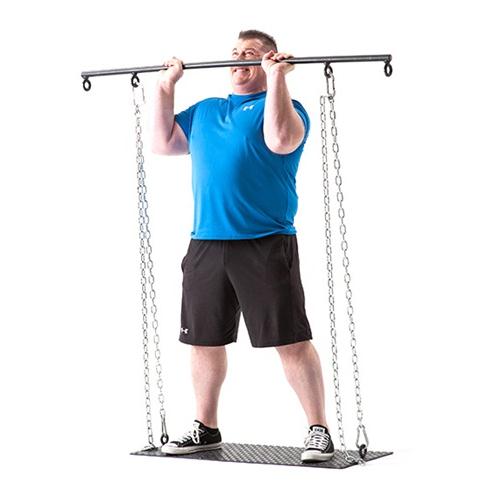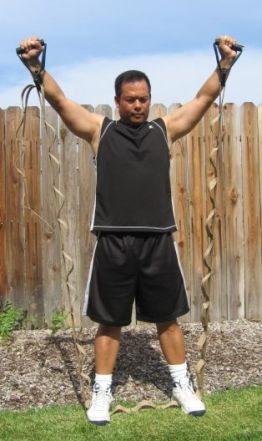It seems like simple equipment to support isometric exercises would indeed be logical. There might be such a thing. But I couldn't find a quick answer for this. I almost expect to see multiple experimental solutions, given that combating muscle atrophy in zero G is a major concern.
Probably the most famous piece of exercise of equipment on the ISS is the Treadmill with Vibration Isolation Stabilization (TVIS). As indicated by the name, the treadmill's chief asset is its ability to be used without propagating virbration to the vast number of micro-gravity experiments on the station.
https://en.wikipedia.org/wiki/Treadmill_with_Vibration_Isolation_Stabilization
This isolation turns out to be a major design requirement. Equipment put on the station should not induce measurable vibration to the station. In fact, this is a major reason why there is no human-sized centrifuge or rotating section connected to the station, even though this would go far toward understanding any proposed partial gravity prescriptions and probably combat atrophy. (There are vibration problems on the station as is. NASA and its partners probably don't want to compound the problem.)
As for why the TVIS is so famous... For very strange reasons related to the magical hold of Stephen Colbert on parts of humanity, it is also known as the Combined Operational Load Bearing External Resistance Treadmill (COLBERT). It was a little weird while it was happening, but it's a good story, and not just because of Colbert. https://en.wikipedia.org/wiki/Tranquility_(ISS_module)#Naming_contest
Were it not for the naming controversy, many of us probably wouldn't even be aware of that particular treadmill.

